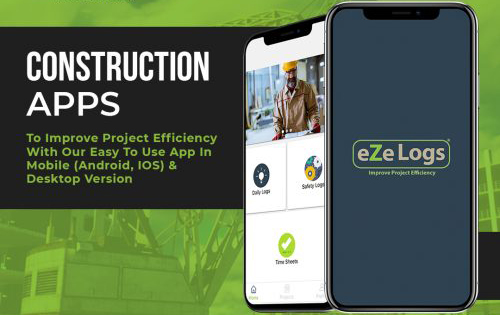In today’s bustling construction industry, marked by an ever-expanding array of projects and a growing number of players, standing out from the competition has become a paramount challenge. The quest for construction contracts often resembles a battlefield of proposals, where each contender vies for attention and recognition. In this fierce environment, the ability to differentiate your construction proposal can be the key that unlocks success.

This article delves into the art and science of Differentiating Your Construction Proposal in a Competitive Market. We’ll explore how rising above the noise and setting your proposal apart can lead to not only winning bids but also building a strong brand identity and forging lasting client relationships. As we navigate through the strategies, benefits, and implementation techniques, you’ll discover how to create a proposal that doesn’t just blend in, but rather stands tall as a beacon of innovation, reliability, and tailored solutions. So, let’s embark on this journey of transforming your proposals into compelling differentiators in a market where distinctiveness is the ultimate prize.
Understanding the Competitive Construction Market
A. Growth and Trends in the Construction Industry
- Overview of the construction industry’s growth trajectory
- Exploration of recent trends, such as sustainable building practices, digital transformation, and modular construction
- Implications of these trends on competition and client expectations
B. Increasing Number of Players and Projects
- Analysis of the influx of contractors, developers, and construction firms
- Discussion on the saturation of the market and its effects on competition
- Impact of globalization and technological advancements on market dynamics
C. Price-Based Competition and Its Limitations
- Examination of the prevalence of price-driven bidding wars
- Identification of challenges arising from solely competing on cost
- Explanation of how focusing on differentiation can break the cycle of price-centered competition
D. Client Perspective: The Search for Value
- Insights into the changing priorities of clients in the construction market
- Discussion on how clients seek value beyond just cost savings
- Exploration of factors influencing clients’ decision-making, including quality, innovation, and project efficiency
E. Case Study: Market Landscape Analysis
- Real-world examples of construction market landscapes showcasing competition and differentiation
- Highlighting instances where differentiation strategies led to successful outcomes
- Lessons learned from these case studies and their applicability to crafting effective proposals
The Power of Differentiation
A. Definition of Differentiation in Construction Proposals
- Clear explanation of what differentiation entails in the context of construction proposals
- Emphasis on how it goes beyond just superficial branding and logo design
B. Benefits of Differentiation for Contractors
- Improved Brand Perception
- How differentiation shapes your brand identity
- The role of differentiation in creating a memorable and distinct brand image
- Targeting the Right Clients
- How differentiation helps attract clients aligned with your strengths
- Avoiding mismatched projects by appealing to your ideal clientele
- Enhanced Negotiation Power
- Discussing how differentiation can shift the balance during negotiations
- Leveraging your unique strengths to negotiate favorable terms
C. Differentiation’s Impact on Long-Term Success
- Exploration of how differentiation contributes to sustainable growth
- Case studies illustrating companies that have thrived through differentiation strategies
- Discussion on how differentiation fosters client loyalty and repeat business
D. Overcoming the Fear of Standing Out
- Addressing concerns about deviating from industry norms
- Encouraging contractors to embrace their uniqueness as a competitive advantage
- Reinforcing the idea that differentiation doesn’t necessarily mean straying too far from core competencies
E. Leveraging Differentiation to Drive Innovation
- How differentiation can spark a culture of innovation within construction firms
- Examples of innovative practices fueled by the desire to stand out
- Encouraging creativity and experimentation to differentiate in unconventional ways
Strategies for Effective Differentiation
A. Identifying Your Unique Value Proposition
- Assessing Strengths, Expertise, and Resources
- Self-evaluation to identify core competencies and strengths
- How to leverage existing expertise to create a unique value proposition
- Defining Your Specialized Areas
- Recognizing niche markets or specialized services where you excel
- Tailoring proposals to showcase expertise in these specific areas
B. Tailoring Proposals to Specific Client Needs
- Researching Client Preferences and Pain Points
- Importance of understanding the client’s industry, challenges, and goals
- Methods for gathering information to tailor proposals effectively
- Customizing Solutions and Showcasing Understanding
- Adapting proposals to address client-specific pain points
- Demonstrating a deep understanding of the client’s needs and aspirations
C. Showcasing Technological Innovation
- Integration of Modern Construction Techniques
- Highlighting innovative construction methods and technologies
- Illustrating how these technologies improve project efficiency and outcomes
- Highlighting Efficiency, Safety, and Sustainability
- Explaining how technology-driven approaches enhance project timelines and safety
- Addressing sustainable practices that align with clients’ environmental concerns
D. Demonstrating a Track Record of Success
- Showcasing Past Projects and Client Testimonials
- Importance of case studies and real-world examples in proposals
- Sharing success stories that reflect your capabilities and client satisfaction
- Emphasizing Quality, Timely Delivery, and Client Satisfaction
- Discussing the significance of consistent quality and on-time project completion
- Reinforcing the value of satisfied clients as brand ambassadors
E. Innovating in Communication and Presentation
- Creative Proposal Design and Formatting
- How the visual presentation of your proposal can enhance differentiation
- Utilizing graphics, infographics, and multimedia to engage and impress
- Storytelling Approach
- Crafting narratives that convey your unique journey, values, and commitment
- Connecting on a personal level to resonate with clients emotionally
F. Continuous Improvement and Adaptation
- Encouraging an iterative approach to differentiation
- Staying updated on industry trends and evolving client preferences
- Being open to refining strategies based on feedback and outcomes
Crafting a Compelling Differentiation Strategy
A. Target Audience Analysis
- Identifying Ideal Client Profiles
- Defining the characteristics of clients who align with your strengths
- Creating a detailed persona of your ideal clients
- Aligning Differentiation Strategies with Client Needs
- Mapping your differentiation strategies to address specific client pain points
- Ensuring your proposals resonate with your target audience
B. Competitor Analysis
- Evaluating Competitors’ Strengths and Weaknesses
- Conducting a thorough analysis of your competitors’ offerings
- Identifying gaps in the market where your differentiation can shine
- Identifying Gaps in the Market to Exploit
- Finding opportunities that competitors might have overlooked
- Developing strategies to capitalize on unaddressed client needs
C. Consistency in Branding and Messaging
- Ensuring a Unified Brand Image
- Aligning your proposal’s messaging with your overall brand identity
- Consistency in language, tone, and visual elements across all communication
- Reinforcing Differentiation in Every Touchpoint
- Infusing differentiation into all client interactions, from initial contact to project completion
- Maintaining a cohesive narrative throughout the client journey
D. Balancing Creativity and Practicality
- Pushing Creative Boundaries
- Exploring innovative ways to differentiate without compromising professionalism
- Capturing attention through unique ideas while still meeting project requirements
- Ensuring Feasibility and Deliverability
- Assessing the viability of creative differentiation strategies
- Avoiding overcommitment or underdelivering on promised differentiators
E. Collaboration and Input from Teams
- Involving Key Stakeholders in Strategy Development
- Engaging project managers, engineers, and other team members in differentiation brainstorming
- Harnessing collective insights to enhance the proposal’s uniqueness
- Leveraging Cross-Functional Expertise
- Drawing from diverse skill sets to create comprehensive differentiation strategies
- Ensuring that technical, operational, and creative aspects are well-balanced
F. Feedback Loop for Continuous Enhancement
- Seeking Client Feedback on Differentiation Strategies
- Requesting input from existing and potential clients on proposal differentiators
- Incorporating valuable feedback to refine your approach
- Monitoring Success Metrics and Adjusting as Needed
- Tracking the impact of differentiation strategies on proposal acceptance rates and project outcomes
- Adapting strategies based on data-driven insights to maximize effectiveness
Implementing Differentiation in Your Proposal
A. Captivating Introduction
- Grab attention with a unique hook: Intriguing opening with compelling statistics or anecdotes.
- Preview your value: Briefly highlight the distinctive benefits of your proposal.
B. Articulate Your Value Proposition
- Define uniqueness: Concisely state what sets your proposal apart.
- Connect strengths to benefits: Explain how your differentiators directly address client needs.
C. Tailored Solutions
- Address client concerns: Demonstrate understanding of challenges and tailor solutions.
- Outline a customized approach: Describe a plan aligned with the client’s goals.
D. Showcase Technological Edge
- Detail innovative techniques: Explain advanced methods you employ.
- Explain outcome enhancement: Outline benefits of your technology-driven approach.
E. Highlight Past Successes
- Share case studies: Present detailed successful project examples.
- Demonstrate reliability: Showcase a track record of delivering on promises.
F. Enhance with Visuals and Multimedia
- Use visual aids: Enhance points with images, diagrams, and charts.
- Incorporate multimedia: Embed videos or interactive elements to support your proposal.
G. Reflect Client’s Brand and Vision
- Align design with branding: Adapt visual design to match the client’s guidelines.
- Tailor language and tone: Use industry-relevant language for a personalized touch.
H. Create a Lasting Impression
- Reinforce differentiators: Summarize your proposal’s unique value.
- Prompt action: Encourage clients to take the next steps based on your differentiated proposal.
Overcoming Challenges and Objections
A. Addressing Unfamiliar Approaches
- Acknowledging Initial Skepticism
- Recognizing that unique proposals might face initial resistance
- Educating Clients on Benefits
- Explaining the value and rationale behind your innovative ideas
- Offering Real-world Examples
- Sharing success stories from similar projects to build credibility
B. Handling Skepticism about Differentiation Claims
- Providing Evidence and Proof
- Backing up claims with data, case studies, and testimonials
- Transparent Communication
- Being open about your differentiation strategies and how they translate into real results
- Addressing Specific Concerns
- Anticipating potential doubts and preemptively addressing them in your proposal

C. Justifying Potential Cost Differences
- Emphasizing Long-Term Value
- Explaining how your differentiation leads to better outcomes over time
- Comparative Analysis
- Comparing the total value of your proposal against its cost
- ROI Calculation
- Demonstrating how the unique benefits you offer justify any added costs
D. Fostering Client Confidence
- Confidence through Expertise
- Highlighting your team’s experience and skills
- Open Communication
- Encouraging questions and discussions to address any uncertainties
- Demonstrating Flexibility
- Showing willingness to adjust your proposal based on client feedback and needs
E. Adapting Differentiation to Fit Client Preferences
- Customizing Strategies
- Being flexible in tailoring your differentiators to match the client’s vision
- Aligning with Client Goals
- Demonstrating how your proposal contributes to the client’s overarching objectives
F. Clearing the Path for Acceptance
- Emphasizing Collaboration
- Illustrating your willingness to work closely with the client throughout the project
- Showcasing Smooth Implementation
- Describing a seamless transition from proposal to project execution
G. Conclusion: Confidence in Differentiation
- Reinforcing Your Unique Value
- Summarizing the ways your differentiation addresses challenges and objections
- Expressing Readiness to Overcome Hurdles
- Conveying your commitment to ensuring a successful partnership despite potential obstacles
Final thoughts
As the construction industry’s competitive landscape continues to evolve, the power of differentiation in your proposals becomes increasingly vital. By successfully implementing strategies that set you apart from the crowd, you not only attract attention but also pave the way for lasting success. Embracing uniqueness, innovation, and client-centric solutions, your proposals become more than just documents; they become catalysts for transformation and growth.
In a world where price-based competition can only take you so far, differentiation offers a dynamic approach to capturing the attention of discerning clients. By articulating your unique value proposition, addressing client concerns, and showcasing your technological edge, you position yourself as a true partner in the client’s journey.
Overcoming challenges and objections, from skepticism to potential cost differences, demonstrates your commitment to delivering exceptional results. By adapting your differentiators to client preferences and fostering collaboration, you forge strong relationships based on trust and understanding.
As you craft your proposals, remember that differentiation is not just a strategy; it’s a mindset that permeates every aspect of your approach. Through captivating introductions, clear value articulation, tailored solutions, and a touch of innovation, your proposals become beacons of possibility in a competitive market. By consistently reinforcing your distinctiveness and inviting clients to take action, you shape the narrative of your success.
In conclusion, the art of differentiation in construction proposals is your key to thriving in an ever-changing and dynamic industry. As you navigate the path ahead, armed with the insights and strategies shared in this article, may your proposals stand out as testaments to your expertise, innovation, and unwavering commitment to excellence.


